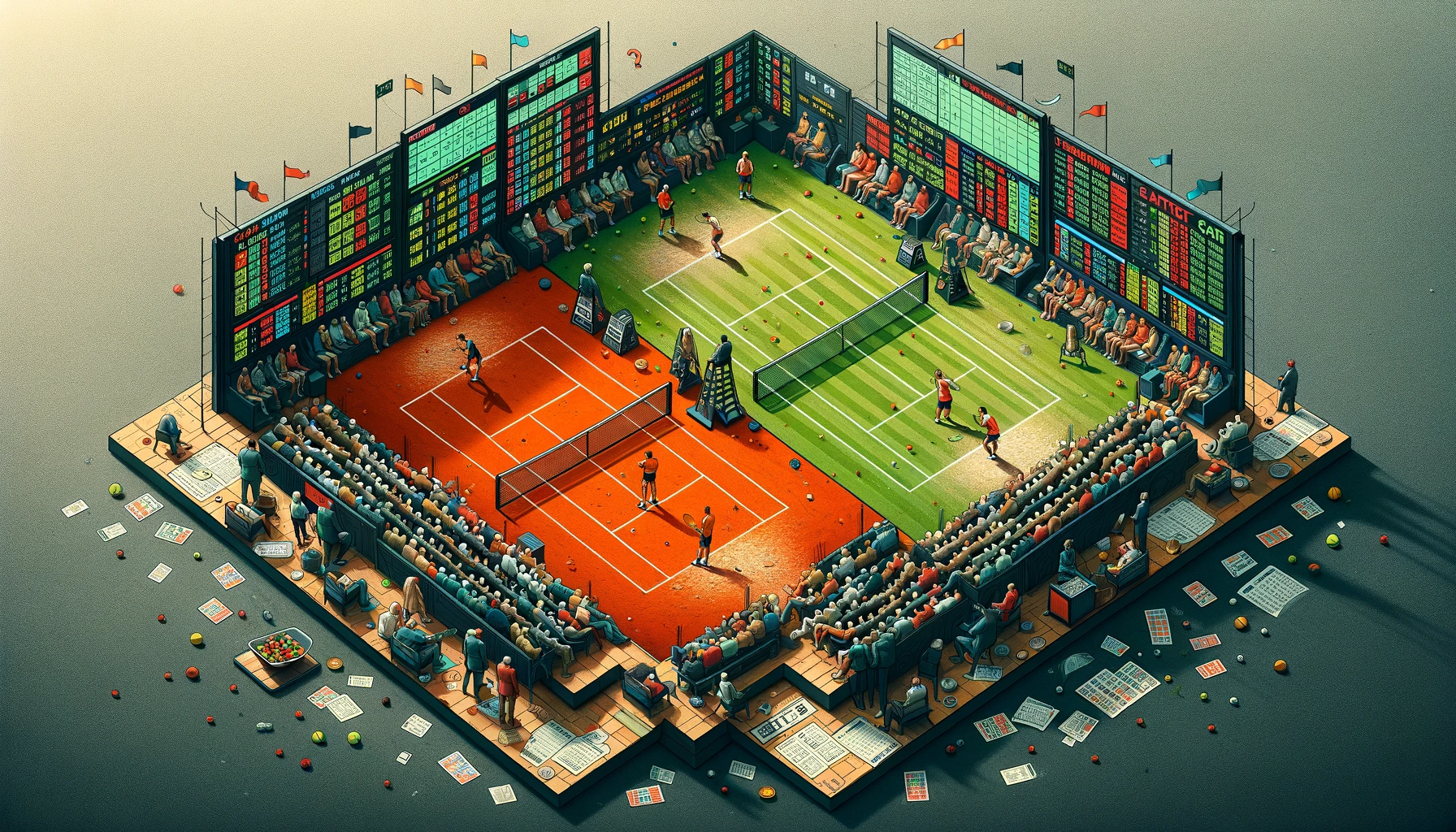Tennis is played on a variety of court surfaces, each with distinct properties that can affect player strategy and match outcomes. This article analyses how court speed and ball bounce could shift betting odds and lines, requiring adaptable approaches for successful wagers. We’ll cover the contrasting styles encouraged by clay, grass and hard courts without definitive recommendations on betting itself, which entertainment seekers should pursue responsibly.
Contrasting Court Surfaces Change Tactics and Titles
Tennis tournaments happen on three primary playing fields requiring tactical adjustments from competitors. Clay courts like the French Open feature a soft, loose top layer scraping off speed, resulting in extended rallies favouring consistency and fitness. Grass courts at Wimbledon generate low, skidding bounces rewarding aggressive net attacks. Finally, hard courts balance pace and bounce, though variations exist between acrylic and laykold surfaces.
These divergent settings encouraged specialised virtuosos like consistent clay icon Rafael Nadal or grass maestro Roger Federer. Meanwhile, adaptable stars like Novak Djokovic can thrive on every surface by adjusting tactics accordingly. Court speed and bounce discrepancies reward well-rounded skillsets and stimulate intriguing player matchups, factors perceptive betters can evaluate when handicapping contests.
Table: Court Surface Properties and Related Playing Styles
| Surface Type | Ball Speed | Ball Bounce | Playing Style Encouraged |
| Clay | Slow | High | Consistent baseline play and fitness |
| Grass | Fast | Low | Aggressive net attacks |
| Hard | Medium-Fast | Medium | Balanced adaptability |
Analysing Tournament Trends and Odds Movement
Betting markets analyse player form, health and head-to-head records when generating match odds and lines. However, court surfaces can also spark notable betting trends and fluctuations once draws are released. By tracking the ATP and WTA tours across court types and adjusting expectations accordingly, amateur oddsmakers can seek profitable spots.
For example, clay court beasts like Rafael Nadal often see their French Open futures odds tighten given historical dominance on the crushed brick. Stylistic struggles ending grass campaigns prematurely may lower elite baseliners’ Wimbledon lines. Meanwhile, odds could lengthen for attacking players facing prospects of red dirt wars stretching their movement capabilities.
Identifying these potential positional and stylistic mismatches early creates valuable betting situations. Say an improving attacking prospect lands the defending French Open champion in their quarter. History says the plodding dirtballer should advance comfortably. But if the draw lands pre-tournament, the rising talent could hold betting value at longer odds in that specific matchup.
Legendary Examples Where Courts Impacted Outcomes and Bets
Some esteemed veterans leveraged court mastery to author legendary campaigns that made pre-match bets quite profitable with hindsight. When comparing playing styles, current form and surface variables, several remarkable examples emerge of courts catapulting or crippling all-time greats.
Rafael Nadal’s first French Open title as a teenager in 2005 marked the dawn of a Parisian dynasty, amassing a staggering 112-3 record on the famed red clay. The King of Clay’s ruthless Roland Garros dominance would’ve padded plenty of bet slips over the years if supporters recognized the young Majorcan’s skills suited perfectly for the terre battue.
In contrast, Pete Sampras claimed 14 Grand Slam titles but never conquered the clay at Roland Garros during his esteemed career. The lighting serve-and-volleyer struggled moving on dirt as passing shots dipping at his feet led to early Paris exits. Identifying that stylistic disadvantage on clay for the all-time ace leader could’ve saved frustration for supporters betting on Sampras’ French Open futures year after year.
Comparing Historical Trends to Find Values
Tennis is a fascinating sporting spectacle, but court variables shake up expected outcomes, allowing smart and reasonable supporters to capitalise for entertainment purposes only. Reviewing player performance and betting trends by surface equips intelligent observers to find advantageous situations when wagering on matches and tournaments.
As the tours transition from hard courts to spring clay before hitting the grass season, expect betting odds and lines to bend. Whether targeting new French Open storylines or Wimbledon repeats, understanding court-based history provides useful context to make responsible speculations. Just like agile players pivot approaches between surfaces, informed supporters can also adjust perspectives.
By blending player of court expertise and current health, sharp supporters give themselves chances at profitability. But most importantly, rational fans avoid unrealistic expectations, bet safely within limits and see tennis gambling as mere accompaniment augmenting viewing enjoyment of an iconic game.
Finally, tennis court surfaces heavily influence playing styles, rally length and match outcomes as unique tacticians leverage their strengths. Analysing factors like court speed, bounce and historical trends can reveal intriguing betting opportunities and fluctuating odds for reasonable supporters. Adapt one’s viewpoint across the multiple Slam stages to make responsible wagers based on player-surface fit.
